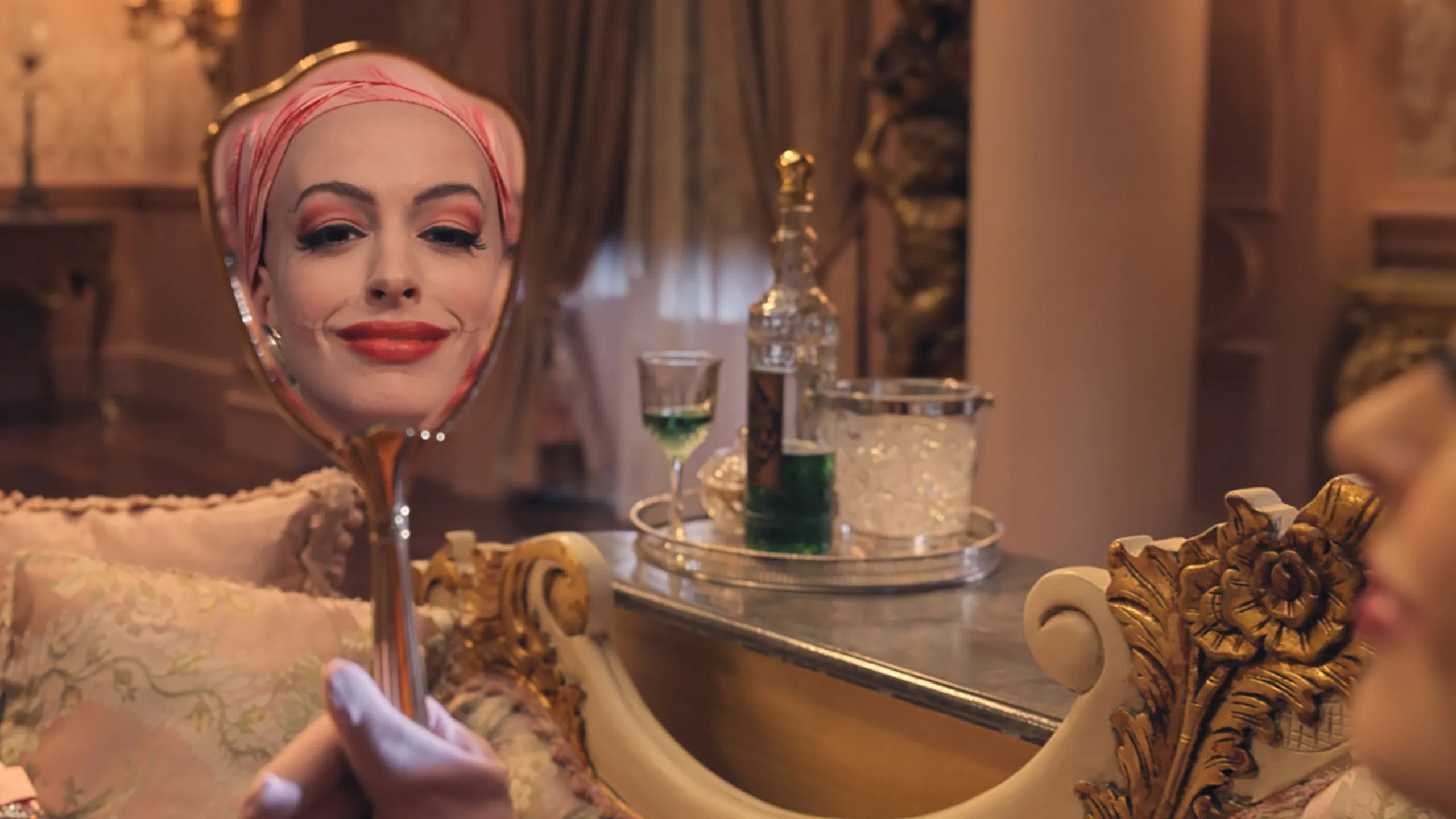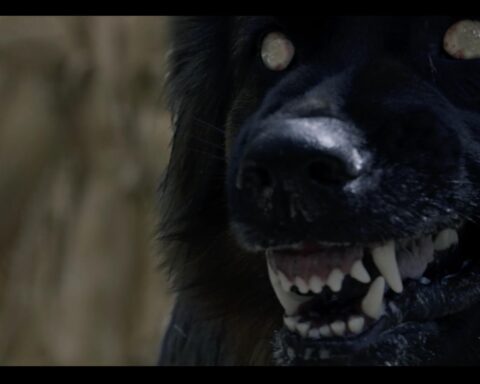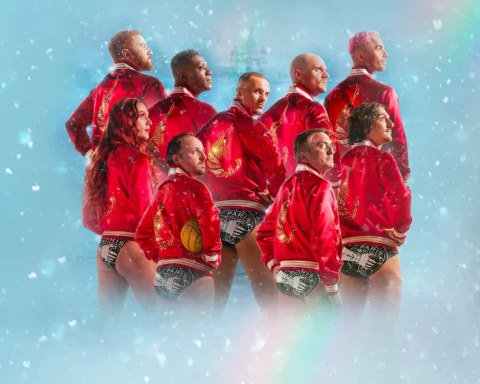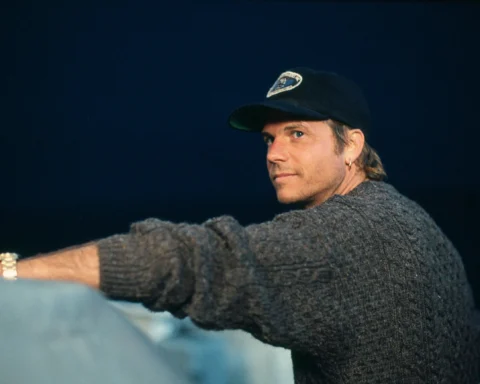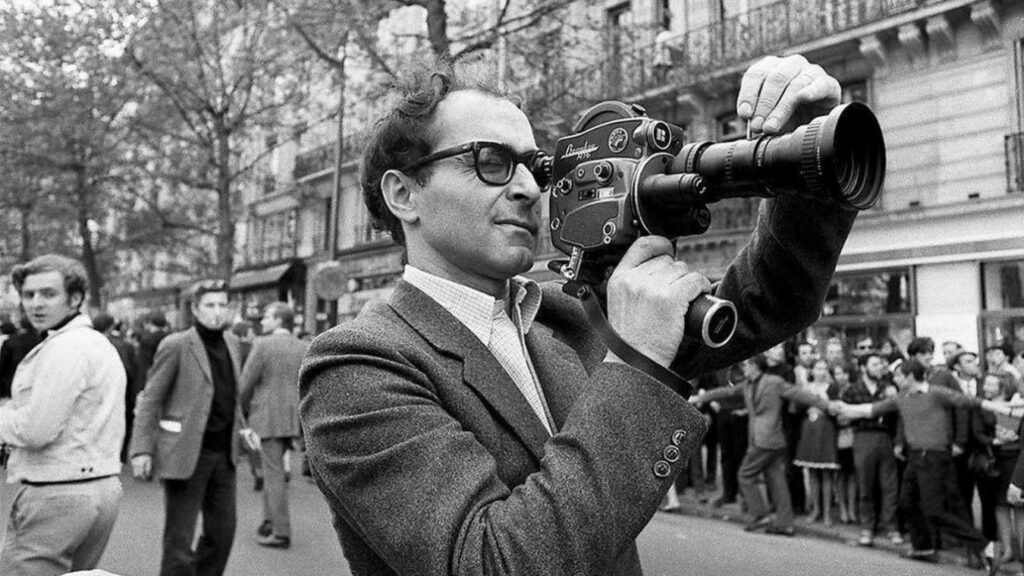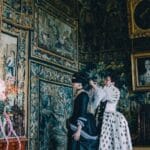The film adaptations of Roald Dahl’s The Witches, first released in 1990 and later remade in 2020, offer a fertile ground for exploring themes of womanhood, motherhood, and witchcraft. Directed by Nicolas Roeg and starring Anjelica Huston, the 1990 version presents a dark, unsettling narrative, while Robert Zemeckis’ 2020 remake, featuring Anne Hathaway, takes a more polished and modern approach. Despite their common source material, the films diverge significantly in their representation of women and the thematic weight they carry, reflecting evolving societal attitudes over the intervening three decades.
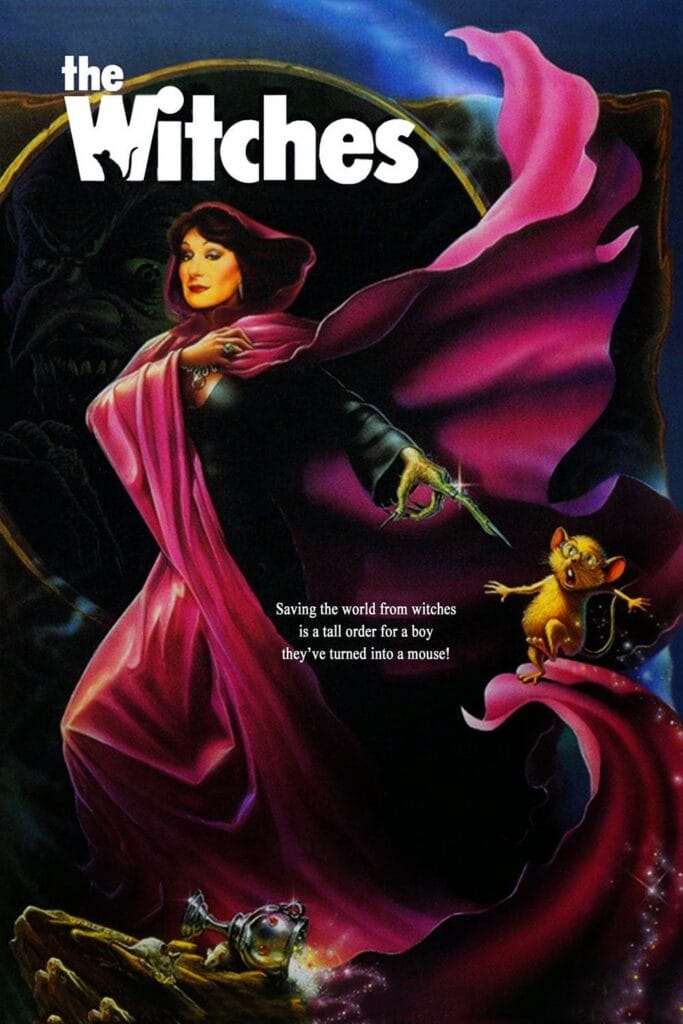
The 1990 Film: Anjelica Huston’s Grand High Witch and the Ambiguity of Female Power
In Nicolas Roeg’s 1990 adaptation, Anjelica Huston’s portrayal of the Grand High Witch is both mesmerizing and terrifying. Huston’s witch is a complex character, embodying an archetype that combines beauty, charisma, and malevolence. Her physical transformation into a hideous, grotesque creature underscores a recurring theme in folklore and fairy tales: the fear of powerful women.
The Dichotomy of Female Representation
The film’s representation of women through the Grand High Witch contrasts sharply with the character of the Grandmother, played by Mai Zetterling. The Grand High Witch’s power is depicted as dangerous and corrupting, emphasizing an age-old trope that aligns female power with evil. Her transformation scene, where she sheds her human disguise to reveal a monstrous form, can be read as a metaphor for the societal fear of women who step outside traditional roles.

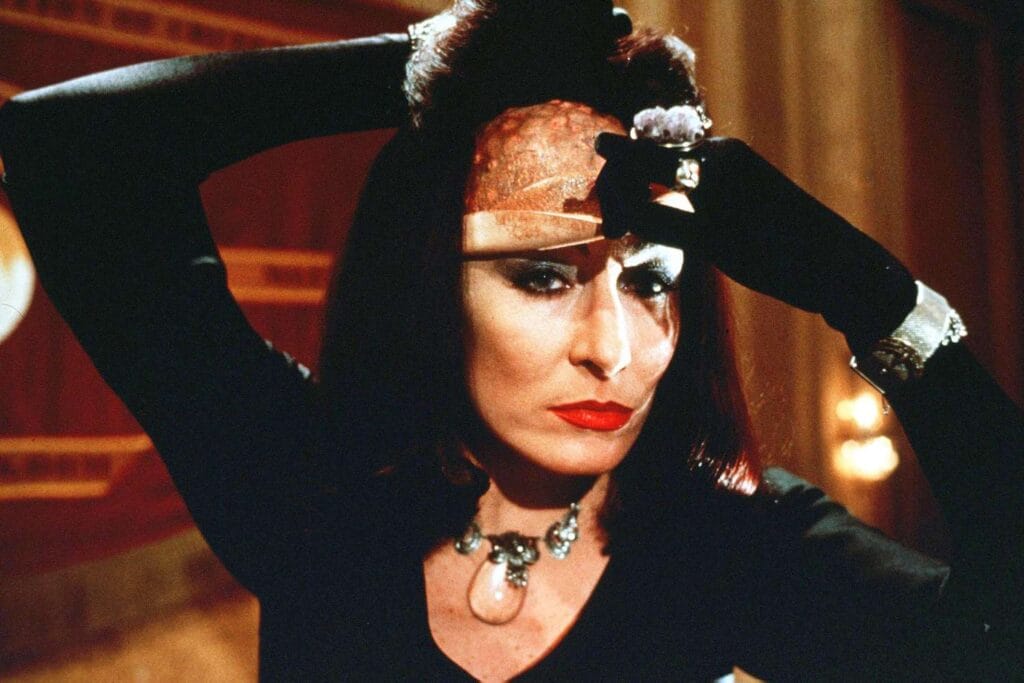
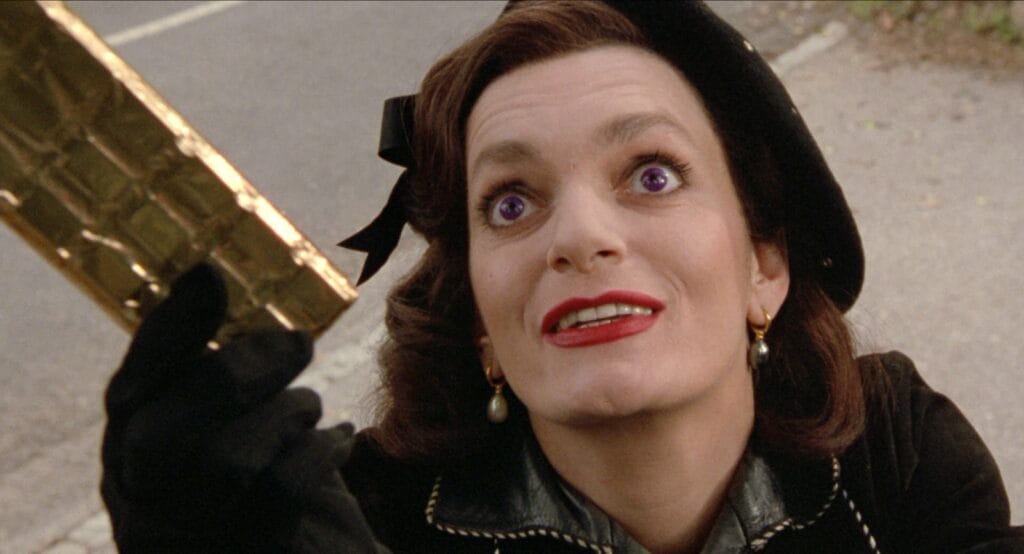



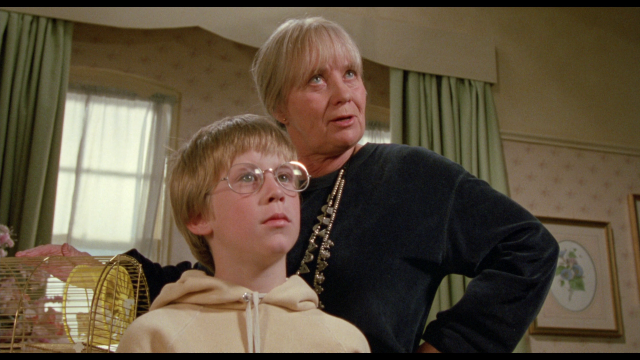
On the other hand, the Grandmother embodies wisdom, nurturance, and protection, reinforcing a more traditional and benign image of femininity. This dichotomy between the dangerous, independent witch and the caring, maternal figure reflects broader societal anxieties about women’s roles. The Grand High Witch’s ultimate defeat by a boy and his grandmother can be interpreted as a reinforcement of traditional gender norms, where the patriarchal order is restored by subduing the threatening female power.
Motherhood as a Central Theme
Motherhood in the 1990 film is portrayed through the Grandmother’s relationship with her grandson, Luke. Her nurturing and protective nature contrasts starkly with the Grand High Witch’s child-hating malevolence. This juxtaposition highlights a clear binary: the ‘good’ woman as mother and the ‘bad’ woman as witch. The Grandmother’s role extends beyond mere caregiver; she is also a guide and protector, embodying an idealized form of motherhood that is wise, loving, and self-sacrificing.
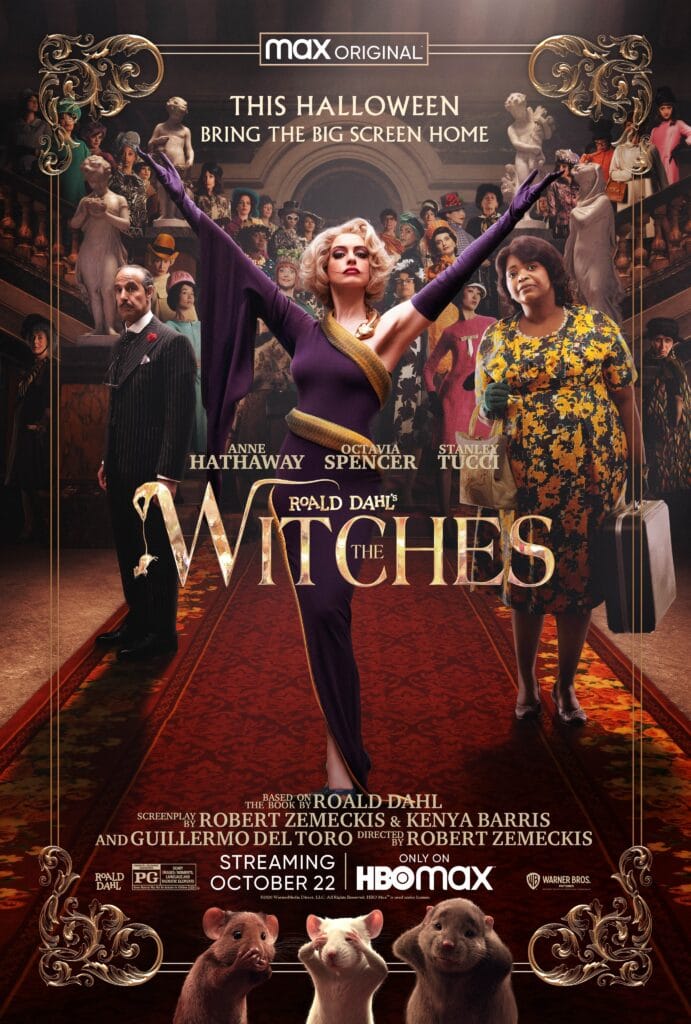
The 2020 Film: Anne Hathaway’s Grand High Witch and Modern Feminist Sensibilities
Robert Zemeckis’ 2020 remake, starring Anne Hathaway as the Grand High Witch, offers a reimagined perspective that aligns more closely with contemporary feminist sensibilities. While retaining the core elements of Dahl’s story, the film shifts its portrayal of women and power, reflecting changes in societal attitudes towards gender and authority.
Redefining Female Power
Anne Hathaway’s Grand High Witch is glamorous, assertive, and unapologetically ambitious. Unlike the 1990 version, which leans heavily on horror and grotesque imagery, the 2020 film imbues the character with a sense of style and sophistication. Hathaway’s witch is a figure of empowerment, albeit still villainous. Her character is less about inducing fear of female power and more about showcasing it in a way that is captivating and formidable.

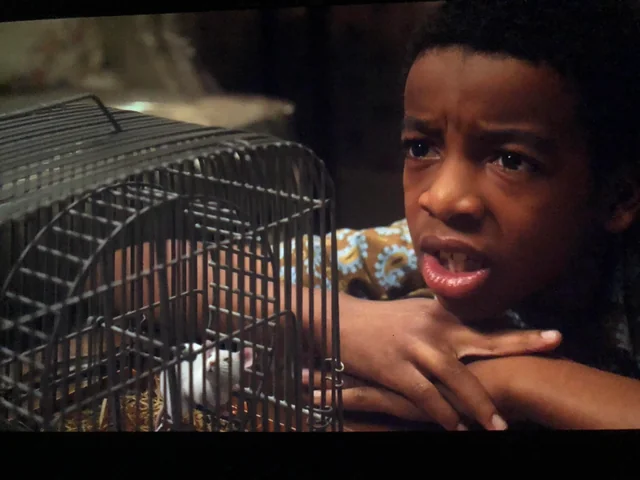
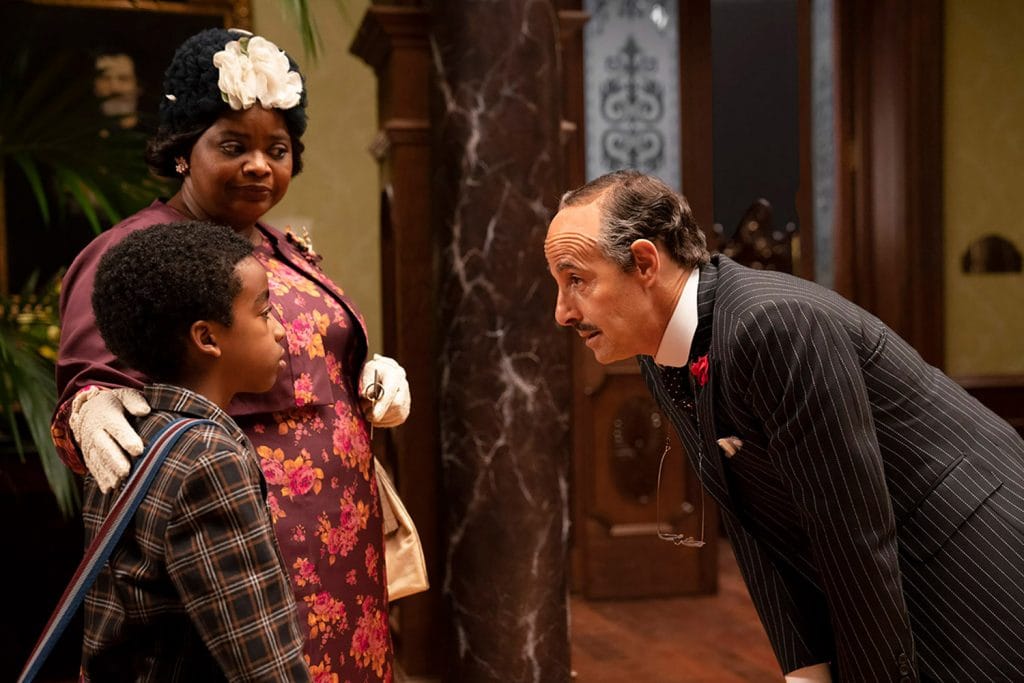
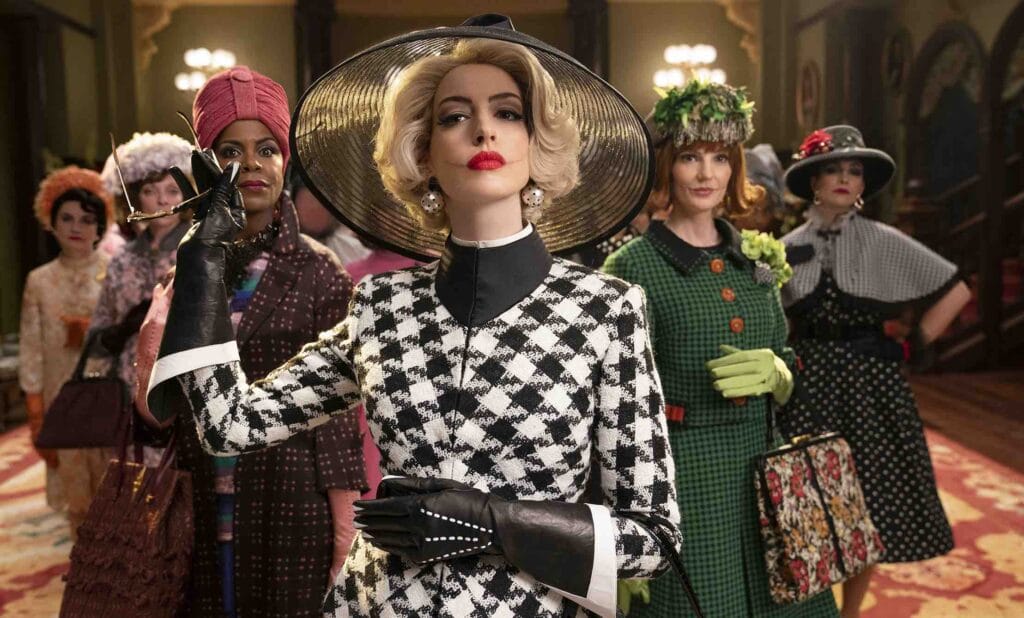
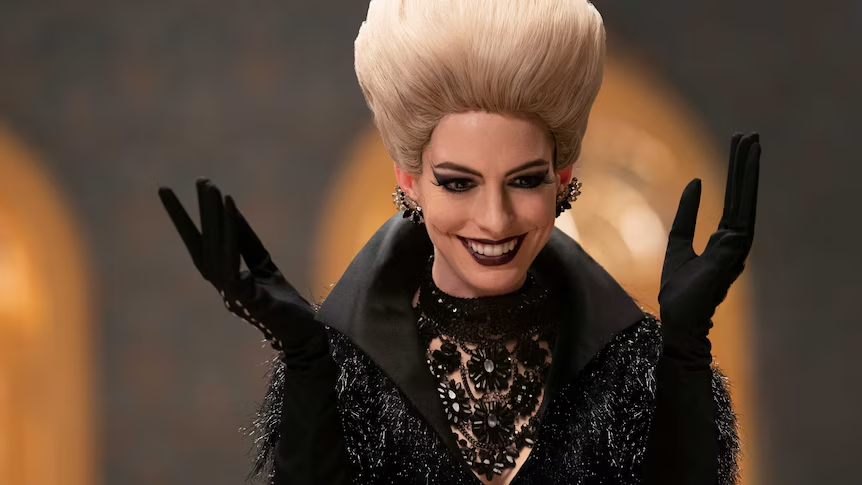
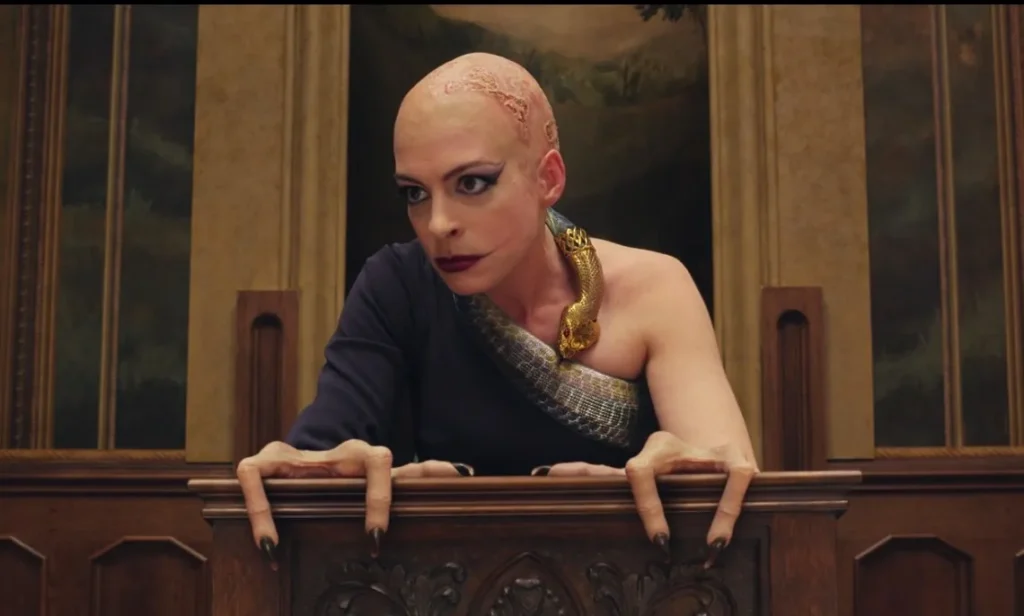

The film’s visual and narrative choices suggest a departure from the older trope of equating female power with monstrosity. While the Grand High Witch remains the antagonist, her portrayal carries undertones of admiration for her cunning and leadership. This shift can be seen as reflective of a broader cultural movement towards recognizing and celebrating women’s strength and ambition, even when they are cast in villainous roles.
Evolving Themes of Motherhood
The 2020 adaptation also revisits the theme of motherhood, but with a nuanced approach. The Grandmother, played by Octavia Spencer, is not just a guardian but also a figure of resilience and empowerment. Her character is given more depth, emphasizing themes of courage and resourcefulness. The narrative highlights her role in empowering her grandson, suggesting a more collaborative and egalitarian approach to family dynamics.
This portrayal contrasts with the more passive depiction of motherhood in the 1990 film. Spencer’s Grandmother is an active participant in the story’s resolution, working alongside her grandson rather than merely guiding him. This shift reflects contemporary views on parenting and the importance of empowering children through shared experiences and mutual respect.
Witchcraft as a Reflection of Societal Fears and Fascinations
Witchcraft, as portrayed in both films, serves as a metaphor for societal fears and fascinations surrounding female autonomy and power. The depiction of witches in folklore and popular culture has long been associated with rebellion against patriarchal norms, embodying both fear and fascination with women who defy societal expectations.
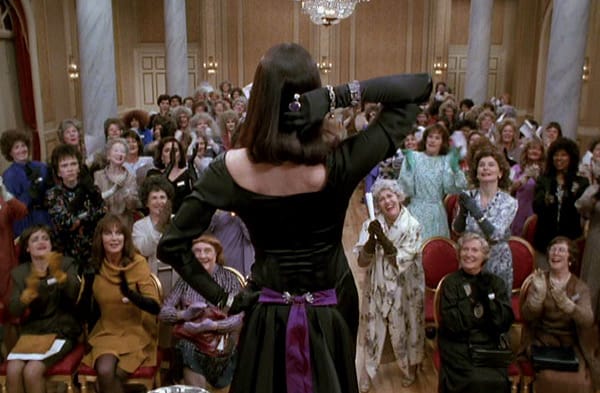
The 1990 Film: Witchcraft as Monstrous and Malevolent
In the 1990 film, witchcraft is depicted as a dark, malevolent force. The witches are not just adversaries; they are embodiments of evil, with the Grand High Witch as their leader. This portrayal reinforces negative stereotypes about women who possess power outside conventional boundaries. The fear of witches, and by extension powerful women, is rooted in their ability to subvert traditional gender roles and societal expectations.
The film’s narrative arc, where the witches are ultimately defeated, can be read as a restoration of the patriarchal order. The witches’ plan to turn children into mice and exterminate them is thwarted by a combination of male bravery and female wisdom, suggesting that the societal structure is preserved through the cooperation of traditional gender roles.
The 2020 Film: Witchcraft as Empowerment and Subversion
The 2020 remake presents witchcraft with a more nuanced and modern perspective. While the witches are still antagonists, their portrayal is less about inducing fear of female power and more about showcasing it in a way that is complex and multifaceted. Hathaway’s Grand High Witch, with her charisma and command, embodies a form of power that is both alluring and intimidating.
This representation aligns with contemporary feminist discourse, which often celebrates female autonomy and subversion of patriarchal norms. The witches’ ultimate defeat is not just a triumph of good over evil but also a commentary on the importance of collaboration and mutual respect in overcoming challenges. The narrative suggests that power, even when wielded by women, is not inherently evil but can be dangerous when used for malevolent purposes.

Comparing the Two Films: A Reflection of Societal Shifts
The differences between the 1990 and 2020 adaptations of The Witches highlight broader societal shifts in attitudes towards women, motherhood, and power. The 1990 film’s portrayal of women is rooted in traditional and somewhat conservative views, while the 2020 remake reflects more progressive and nuanced perspectives.
Shifts in Female Representation
The transformation of the Grand High Witch from a grotesque monster in the 1990 film to a charismatic leader in the 2020 version mirrors changing attitudes towards female power. The earlier film’s emphasis on physical monstrosity as a metaphor for female ambition reflects a societal fear of women stepping outside traditional roles. In contrast, the 2020 film’s portrayal of the Grand High Witch as a glamorous and assertive figure aligns with modern feminist values that celebrate women’s strength and ambition, even when they are cast as antagonists.
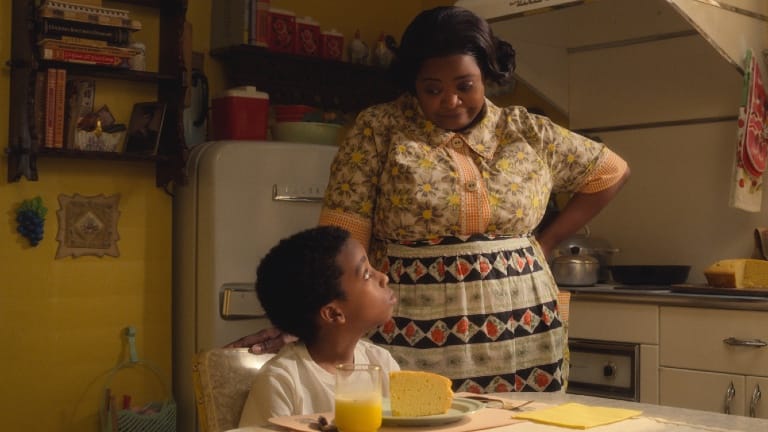
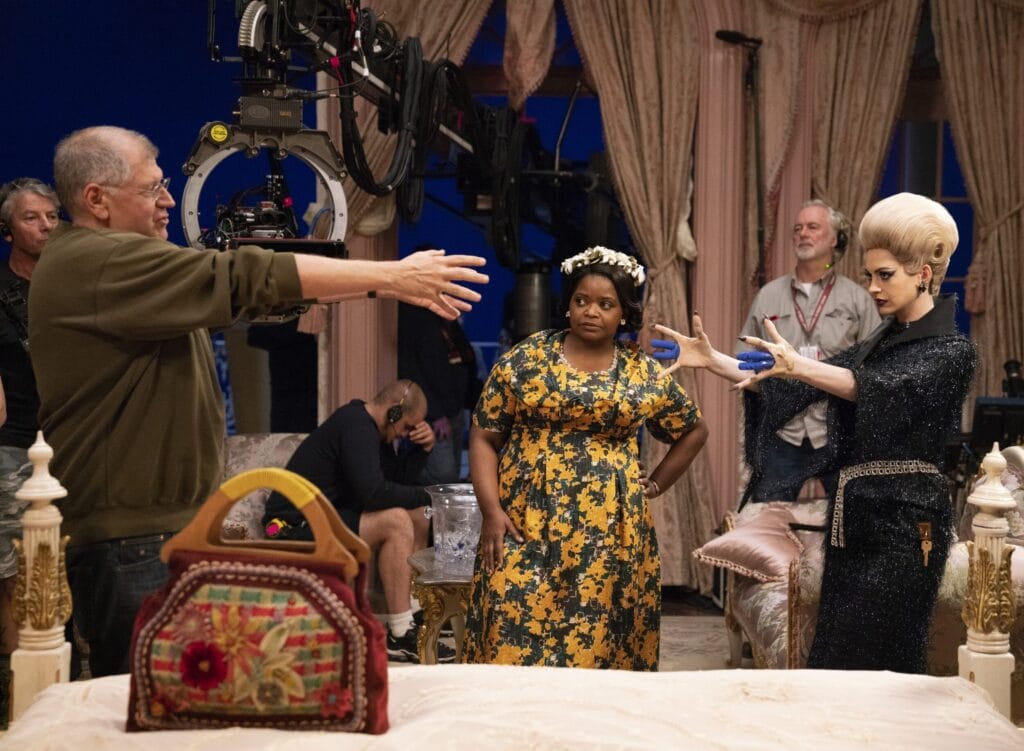

Evolving Notions of Motherhood
The representation of motherhood also evolves between the two films. The 1990 film’s depiction of the Grandmother as a nurturing and protective figure reinforces traditional notions of motherhood. In contrast, the 2020 remake’s portrayal of the Grandmother as an active and empowered character reflects contemporary views on parenting, emphasizing collaboration and mutual respect. This shift highlights a move away from the idealization of motherhood as solely about sacrifice and protection towards a more dynamic and empowering model.
Witchcraft as a Cultural Metaphor
The portrayal of witchcraft in the two films serves as a cultural metaphor for societal fears and fascinations surrounding female autonomy and power. The 1990 film’s depiction of witchcraft as a malevolent force aligns with traditional narratives that view female power as dangerous and subversive. In contrast, the 2020 film’s more nuanced portrayal suggests a recognition of the complexity and multifaceted nature of female power, reflecting a broader cultural shift towards celebrating women’s autonomy and subversion of patriarchal norms.

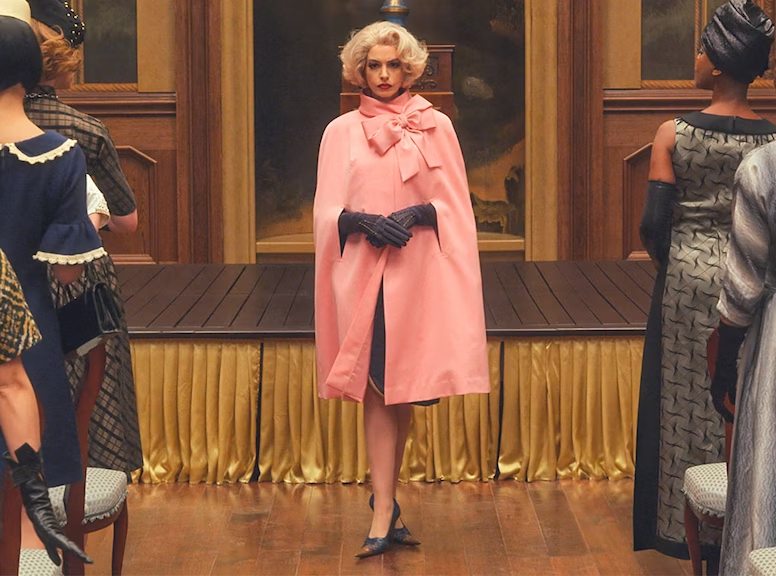
Conclusion: The Political Commentary of The Witches
The adaptations of The Witches in 1990 and 2020 provide a compelling lens through which to examine the political and cultural evolution of women, motherhood, and witchcraft. The 1990 film, with its stark dichotomies and traditional undertones, encapsulates societal anxieties about female power and the maintenance of conventional gender roles. In contrast, the 2020 remake offers a more progressive and nuanced perspective, celebrating female autonomy and strength while acknowledging the complexities inherent in power dynamics.
Through the differing portrayals of the Grand High Witch and the Grandmother, these films illustrate the shifting attitudes towards women’s roles in society and family. The transformation of the Grand High Witch from a grotesque, fearsome figure in 1990 to a charismatic and assertive leader in 2020 mirrors broader cultural shifts towards recognizing and celebrating women’s ambition and autonomy. Similarly, the evolving depiction of motherhood from a protective and nurturing role to one that emphasizes collaboration and empowerment reflects contemporary views on parenting and family dynamics.
These films not only reflect the cultural and political climate of their respective times but also influence societal perceptions of women, motherhood, and power. By exploring these adaptations through a political lens, we gain deeper insights into the ongoing struggles and achievements of women in their pursuit of equality and recognition in a changing world.
